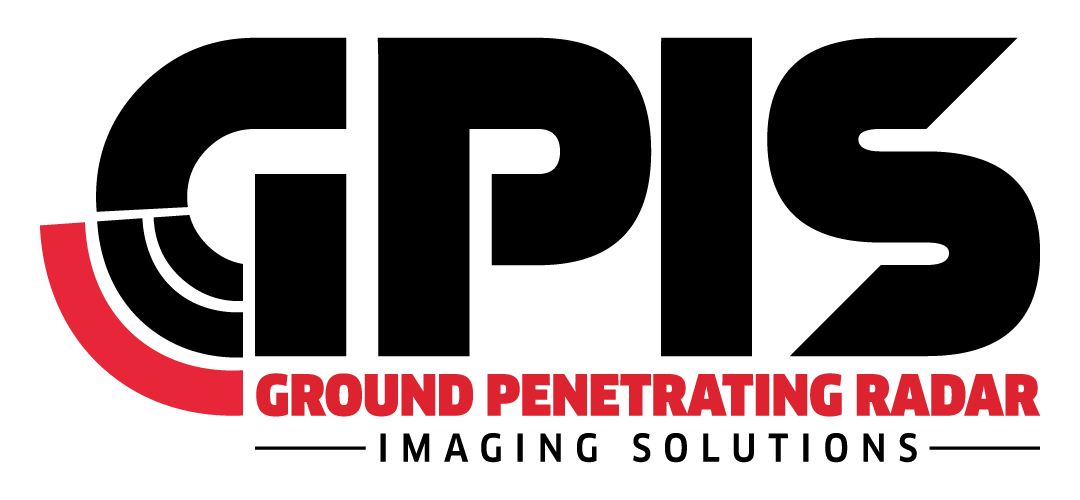GPIS GPR Concrete Scanning
Concrete Scanning with Ground Penetrating Radar (GPR) can detect embedded or hidden objects within the near subsurface.
SCHEDULE YOUR FREE QUOTE
GPR Concrete Scanning
GPR Concrete Scanning: Essentials for Construction Site Safety
The unseen elements within concrete can pose significant challenges in construction and renovation. At GPIS GPR Concrete Scanning, we specialize in ground-penetrating radar (GPR) concrete scanning services. Our advanced imaging technology is adept at locating rebar, post-tension cables, and other potential obstructions embedded within concrete edifices. We pride ourselves on offering precise detection capabilities that play a pivotal role in reducing risks and enhancing the efficiency of your projects.
Our dedicated team of professionals is equipped to cater to a diverse array of concrete scanning requirements in the Chicago area. We commit to delivering meticulous and swift service, ensuring that safety standards are upheld and project schedules are met. Partner with us to gain insights into the intricacies of your construction site, resulting in informed decision-making and seamless execution of your work.
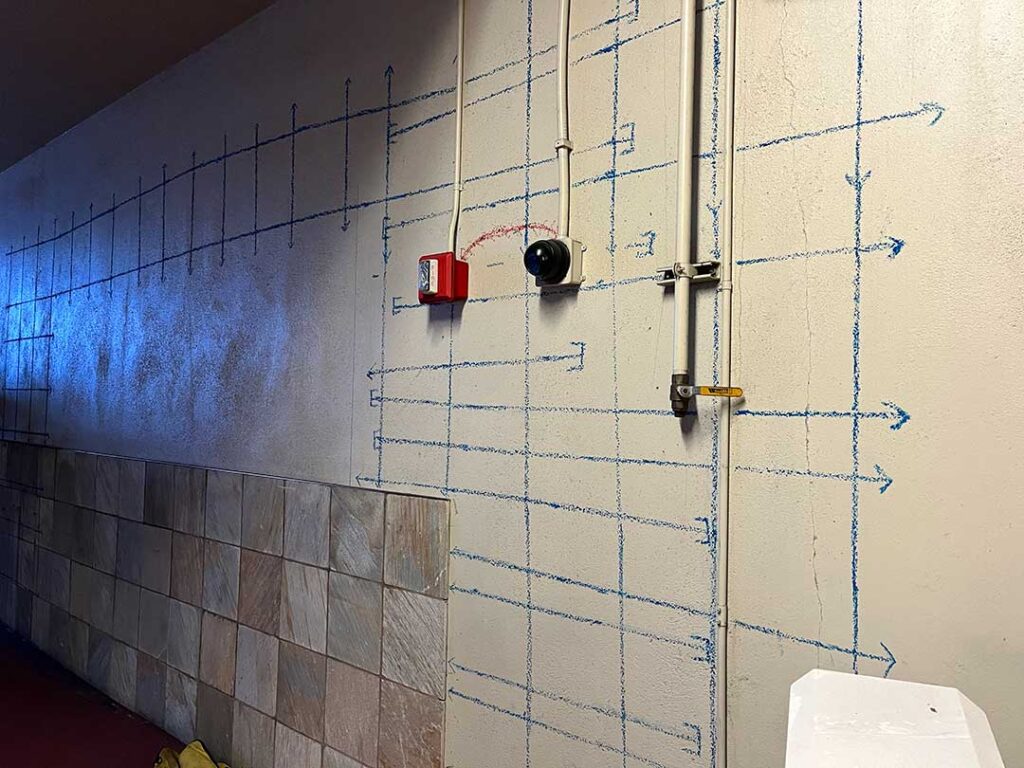
Key Takeaways
Our services provide precise GPR concrete scanning for construction and renovation.
Advanced imaging technology accurately detects embedded objects in concrete.
Partnering with us ensures the safe and efficient execution of projects.
Ground Penetrating Radar for Concrete Assessment
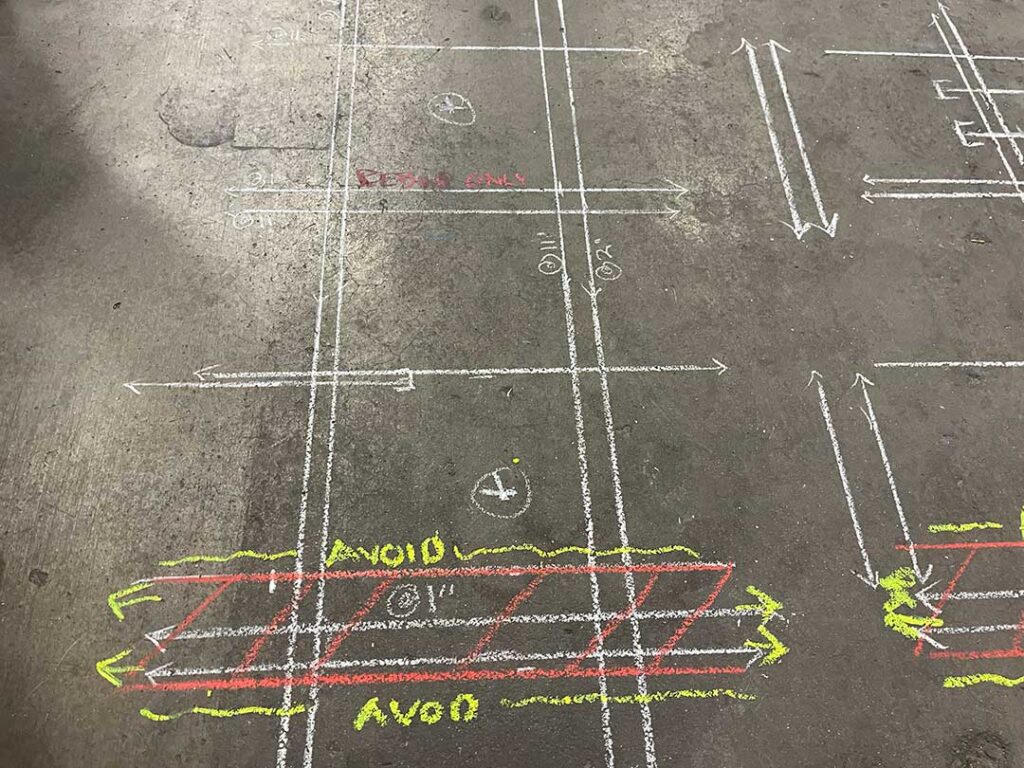
Using electromagnetic techniques, our team provides thorough scanning and imaging of concrete structures. Ground Penetrating Radar (GPR) offers a non-intrusive approach to evaluate the internal state of concrete, brick, or asphalt without causing damage. This advanced method is crucial for revealing hidden elements such as rebar, post-tension cables, and voids in concrete, which bolsters safety and accuracy in both new construction and renovation projects.
Our dedication to precision ensures that every project benefits from a comprehensive assessment, significantly reducing the risk of structural failures and additional costs. This approach is especially important when working with Slab On Grade (SOG), Pan Decking, and Structural Slabs where knowing the exact location of embedded components is vital.
GPR Concrete Scanning Applications
| Applications | Services Provided |
|---|---|
| Integrity of Structural Elements | We detect inconsistencies such as cracks or internal disturbances, ensuring the concrete’s robustness. |
| Rebar Localization | Our GPR services meticulously map rebar placement within concrete structures for both new builds and updates. |
| Post-Tension Cable Mapping | We accurately identify the layout and state of post-tension cables to aid in structural assessments. |
| Concrete Slab Thickness Gauging | Precise measurements of slab thickness are provided to comply with specific engineering standards. |
| Condition Evaluation of Bridge Decks | The well-being of bridge decks is gauged by spotting delamination and potential areas of failure. |
| Identification of Voids | Our radar detects any cavities within the concrete that might affect structural integrity. |
| Tunnel System Assessments | We conduct comprehensive inspections to ensure the stability and safety of tunnel structures. |
| Cover Depth on Reinforcement Estimation | We ascertain the depth of concrete over reinforcement bars to thwart corrosion and maintain durability. |
Applications of Ground Penetrating Radar (GPR) in Concrete Scanning
By utilizing GPR in these applications, we deliver comprehensive insights into concrete structures, enhancing safety, ensuring compliance with design specifications, and aiding in the successful completion of construction projects.
Scanning Slab on Grade with Post-Tension Cables
We use GPR to locate post-tension cables in a slab on grade effectively, which is vital for ensuring structural safety and integrity during construction or renovation. Identifying these components with precision before any modifications is crucial to avoid damage.
Inspecting Reinforced Lightweight Concrete Decks
Our GPR services are ideal for scanning pan decking structures, which are integral in modern construction. Our technology allows us to verify the presence and condition of the reinforcing steel and assess the concrete’s consistency.
Evaluating Structural Slabs’ Integrity
In structural slab analysis, GPR is an essential tool for detecting changes, voids, or possible defects. Accurate scanning assists in preserving the structure’s integrity and ensures proper maintenance and adequate safety measures.
Analysis of Beams and Columns
We apply GPR technology to assess the condition of beams and columns. By detecting reinforcement patterns and potential issues within these critical structural elements, we help maintain their stability and load-bearing capacities.
Locating Reinforcement Bars
Detecting rebar within concrete is a fundamental application of GPR. We conduct precise mapping of steel reinforcement locations, aiding in planning for construction activities that require drilling or cutting through concrete.
Surveying Block Wall Constructions
For concrete masonry unit (CMU) walls, we use GPR to evaluate and confirm the filling status of the block walls, ensuring that they meet design specifications and enhancing our understanding of their structural conditions.
Scanning Preformed Composite Decks and Walls
Our expertise in GPR extends to examining precast decks and walls. This is significant for verifying the placement and density of the structural elements, helping in both the fabrication process and subsequent installations.
Inspecting Waffle Slab Construction
Waffle decks require our precise GPR scanning to ensure the correct installation of the complex rebar network and evaluate the slab’s condition—an essential step to supporting the structure’s overall stability.
Checking Hollow Core Slab Composition
For hollow core decks, we employ GPR technology to analyze the internal features, including the detection of voids, ensuring that these precast structures maintain their intended structural performance over time.
Enhanced Subsurface Imaging Using Electromagnetic Detection
Our team utilizes Ground Penetrating Radar (GPR) for its unparalleled capability in detecting subsurface objects within concrete. With electromagnetic energy, this non-invasive technique sends a radio signal into concrete structures. The signal reflects back upon encountering materials such as rebar, conduits, and voids. This reflection is captured and used to create accurate images of the hidden features, enabling us to understand what lies beneath the surface without drilling or causing damage. The exact positions of crucial elements are identified, thus facilitating safe construction procedures and helping to prevent any structural damages.
- Safety in Construction: By outlining the location and depth of embedded objects, we can prevent potential construction mishaps.
- Efficiency and Precision: Fast and precise, GPR allows for real-time assessments, ensuring projects stay on track.
- Non-Destructive: Unlike other methods, GPR preserves the integrity of the concrete during the scanning process.
- Expertise: Our expertise translates to the provision of detailed subsurface imaging that becomes pivotal for both small-scale and large-scale constructions.
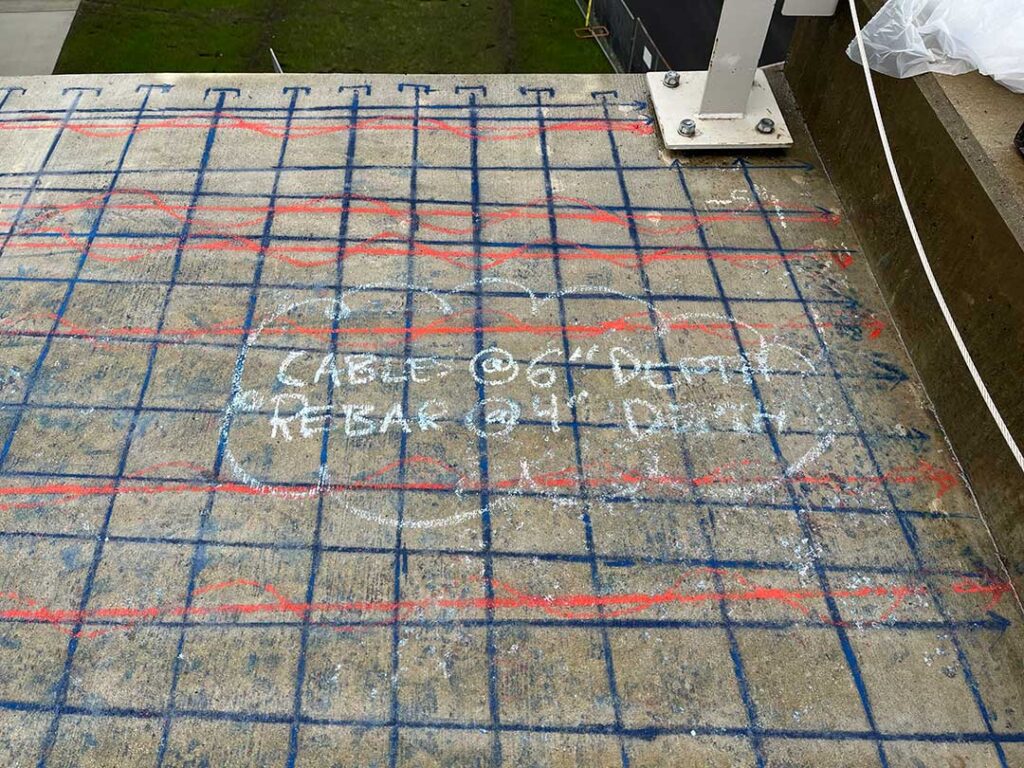
Our advanced GPR services surpass traditional x-ray techniques by being entirely non-destructive and offering real-time results. When pinpointing rebar, uncovering post-tension cables, or mapping out voids, our method proves to be an invaluable asset for any construction or assessment task.
Our specialists deliver meticulous scans paired with detailed analyses. We take pride in our ability to explore the subsurface of concrete thoroughly and provide actionable insights. The convenience and efficiency of GPR over x-ray are clear: there is no radiation hazard, and the data acquisition is quicker and causes no project delays.
Applications for GPR
Versatility across Different Materials
In addition to concrete, our GPR technology extends its scanning prowess across diverse building materials such as brick and asphalt. As we understand the intricacies of urban infrastructure, our service is designed to adapt and deliver precise results in varied scenarios:
Boldly approaching each project with this technology positions us as a primary safeguard against risks, enhancing project efficiency, and ensuring informed decisions in the construction process.
Choosing our services means opting for a comprehensive and proficient approach to subsurface imaging, and it is our commitment to ensure the integrity and safety of your construction endeavors.
Through the incorporation of ground-penetrating radar (GPR), we can now look into concrete depths of up to 18 to 24 inches, illustrating the value of our advanced diagnostics. Our services consistently emphasize the judicious balance between thoroughness and the minimization of disruptions.
We conveniently cater to various construction needs by enabling the ongoing work to proceed without interruption. Our scanning ensures that every decision you make is fueled by accurate and comprehensive data.
Rely on our team for precise concrete scanning and imaging services in Chicago. Quality, professionalism, and cutting-edge technology form the foundation of our work, equipping your projects with the clarity needed to achieve superior outcomes.

Summary of Concrete Scanning Role
In the realm of construction and structural renovation, we recognize the critical contribution of concrete scanning. Our methods, characterized by non-invasive technology, grant us confidence in projecting structural safety, optimizing our workflow, and upholding compliance with industry standards.
- Accuracy: We ensure precise detection of embedded objects like rebar, conduits, and tension cables within the concrete.
- Safety: Our techniques prioritize the well-being of everyone involved by substantially reducing the likelihood of damage and injury.
- Efficiency: We leverage time-saving processes by minimizing the potential for costly errors and project delays.
- Compliance: By meticulously mapping out structures, we support adherence to legal and regulatory frameworks.
